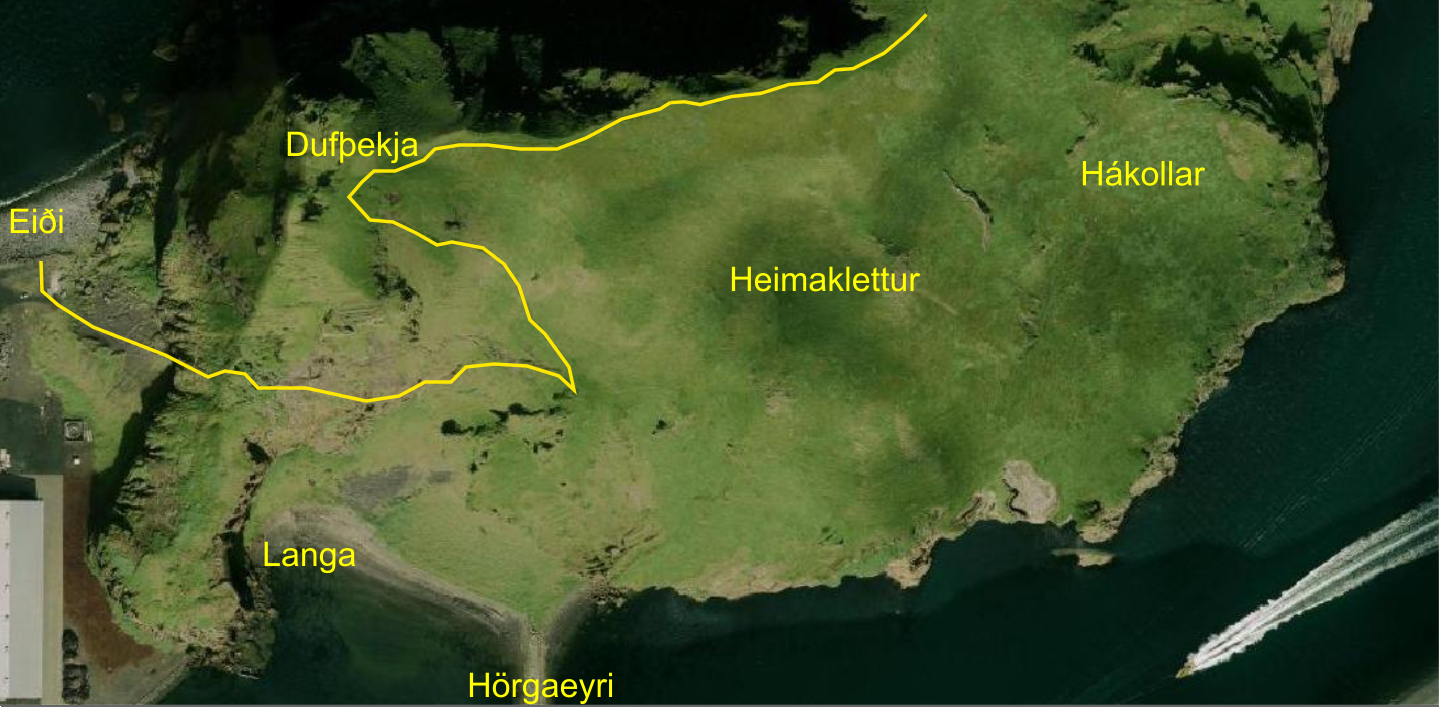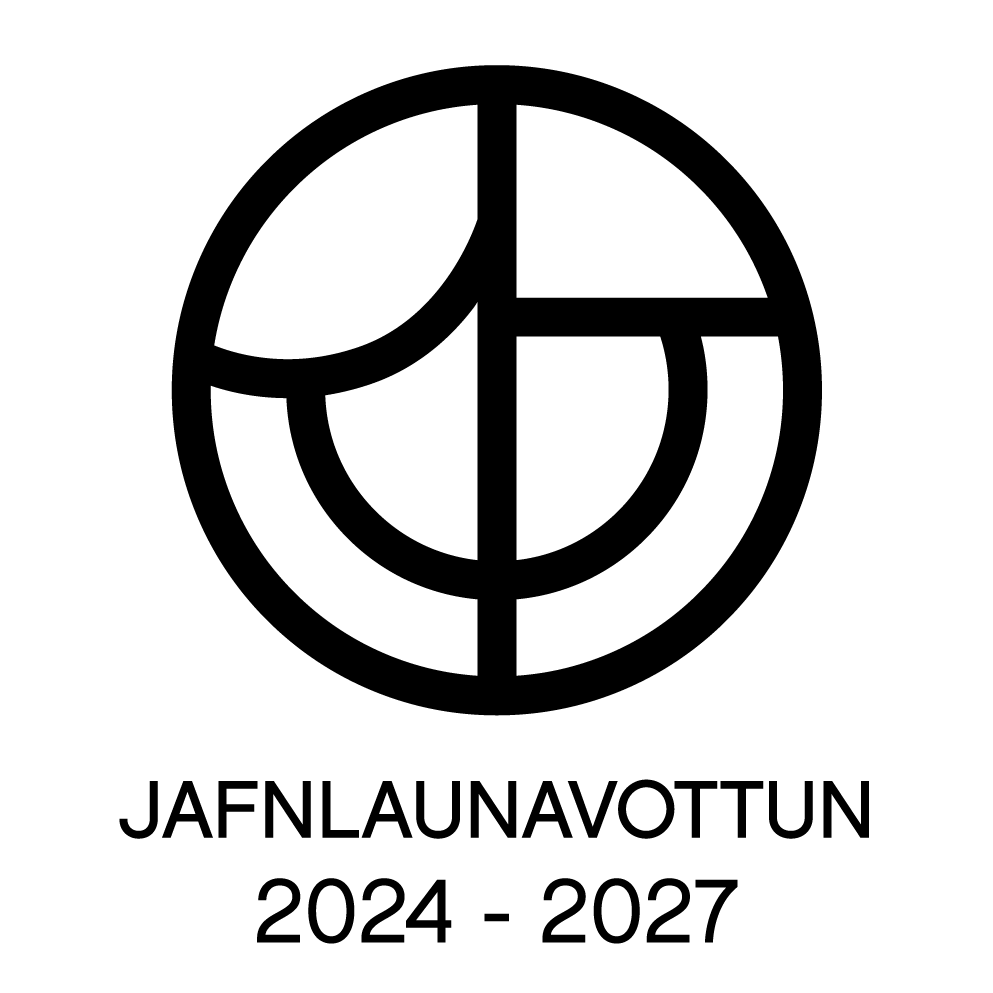Heimaklettur
| A - B |
||||
|---|---|---|---|---|
| 1 hr. | 283 m | 1.8 km |
Mountaineering has long been practiced in Heimaklettur. The ascent has often been difficult and dangerous due to steep slopes, but this was remedied around the year 2000. A ladder was set up where the most difficult area is. However, the hike is still difficult, especially for those who are afraid of heights.
Unfamiliar people are encouraged to be accompanied by a person who knows the situation. Hikers should never go to the edges and they should follow the hiking trail to the top. The weather forecast should be considered before setting off to the mountain. Ladders and grass are slippery when it‘s wet and in addition could wind gusts cause unsafe conditions. It should be borne in mind that the journey down is often more difficult than the journey up. Therefore, if hikers experience discomfort, they are strongly encouraged to turn around.
The hike begins with a climb up a vertical ladder on the west side of the mountain. Between the stairs in Neðri Kleifum there is a stepped path. Between the steps in the second staircase is the so-called Papakross in the rock. It is made of papar, that were Irish or scottish monks who settled in the islands and skerries of the Atlantic Ocean before settlement. A sign has been put up in the rock to the right of the ladder where the cross is found. When you get up the second ladder, you are faced with Heimaklettur's sheep paddock. Then there is a visible path on the slope of the mountain under a rock called Hetta. Follow the path to Þuríðarnef and then up to Hetta. This part of the route can be difficult for those who are scared of heights or unfamiliar hikers. After reaching Hetta, the route is easier as you walk along a footpath on the grass cover of the mountain.
At Heimaklettur it is not unlikely to see sheeps grazing. There are about 44 sheeps on Heimaklettur that stays there all year round. During the summer, the number of sheeps increases to about 100 when lambs are added to the group.
On the northwestern edge of the mountain is Dufþekja, which is named after the slave Dufþakur. The story goes that Daufþakur fled with a group of slaves to the Westman Islands after killing his slave owner Hjörleifur. Ingólfur Arnarson, Hjörleifur's stepbrother, chased the slaves and his men killed them all, most of them on Eiðið, but some climbed rocks and were chased from there, including Hjörleifur's leader slave, Dufþakur.
In Dufþekja and the rock below, there is a large population of northern fulmars and for many years people descendet after northern fulmars and angelica roots. The slope is extremely steep and it is believed that a total of twenty-one has died there.
The hike up the cliff is fun and well worth the effort. The top of Heimaklettur is called Háakolla and from there you can see the town and the islands around Heimaey. On a bright day, the mainland can be clearly seen, where Eyjafjallajökull and Mýrdalsjökull are prominent.
You are at your own risk.


